
Leading Westminster
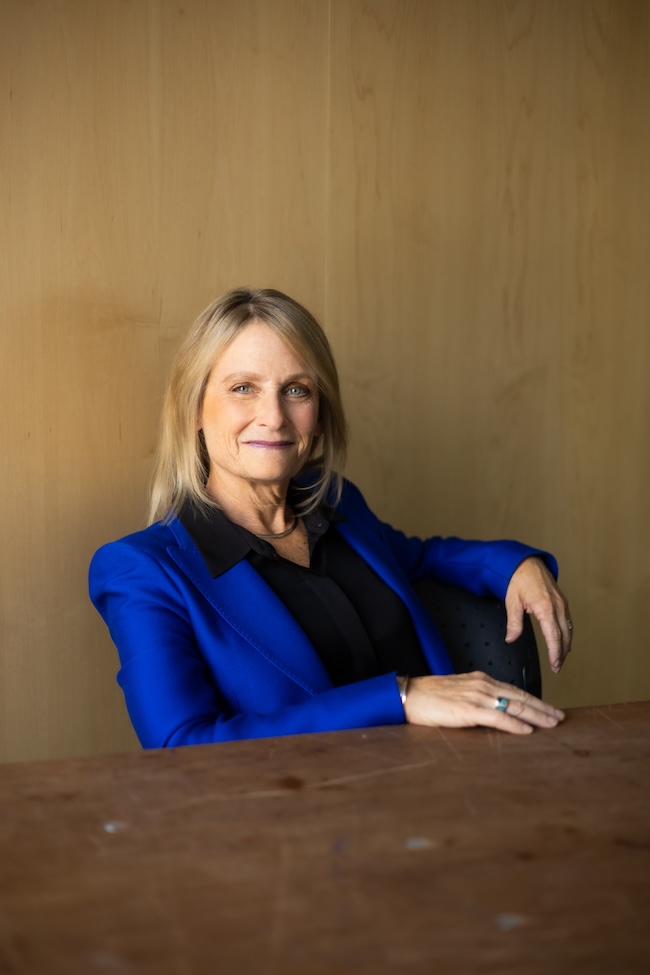
A look back at the presidents of Westminster University
by Violet Czech (’26)
In its 150-year history, Westminster University has been led by 19 presidents. These presidents used their experience, guidance, and resources to navigate changing academic landscapes, difficult financial situations, and the continued growth of the university.
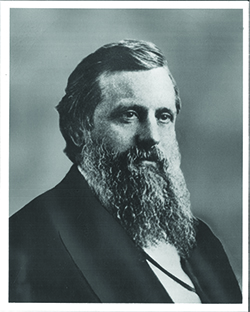 John S. Eaton (1895–1902): John S. Eaton served as Westminster University’s first president, when the institution
was known as Sheldon Jackson College. Eaton was a renowned educator and fundraiser.
He acted as a non-residential president, spending most of his time in Washington,
DC, fundraising and publicizing campaigns to establish the university in Utah. Sheldon
Jackson College held its first commencement under his presidency on June 4, 1901,
and had one sole graduate.
John S. Eaton (1895–1902): John S. Eaton served as Westminster University’s first president, when the institution
was known as Sheldon Jackson College. Eaton was a renowned educator and fundraiser.
He acted as a non-residential president, spending most of his time in Washington,
DC, fundraising and publicizing campaigns to establish the university in Utah. Sheldon
Jackson College held its first commencement under his presidency on June 4, 1901,
and had one sole graduate.
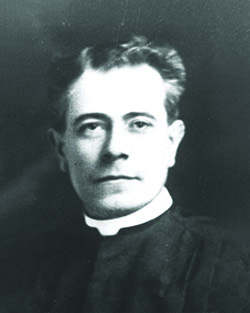 George Bailey (1902–1906): George Bailey was the pastor of the Westminster Presbyterian Church in Salt Lake
City. He was offered the role of president with a salary of $2,500, which he refused
until the university’s finances improved. Bailey spent most of his time as president
of Westminster in Washington, DC, fundraising for the 21-acre plot on 1300 East and
1700 South where Westminster resides today. Under Bailey, Sheldon Jackson College
was renamed Westminster College on February 6, 1902.
George Bailey (1902–1906): George Bailey was the pastor of the Westminster Presbyterian Church in Salt Lake
City. He was offered the role of president with a salary of $2,500, which he refused
until the university’s finances improved. Bailey spent most of his time as president
of Westminster in Washington, DC, fundraising for the 21-acre plot on 1300 East and
1700 South where Westminster resides today. Under Bailey, Sheldon Jackson College
was renamed Westminster College on February 6, 1902.
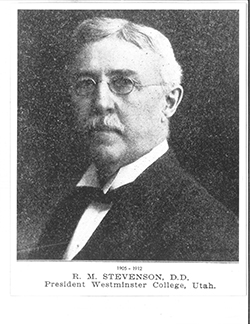 Robert M. Stevenson (1906–1912): Converse and Ferry Halls were built during Robert M. Stevenson’s presidency. The
construction provided additional residential space and an instructional space for
female music and art students. The majority of Stevenson’s residency at Westminster
was spent fundraising by telegram and letter communication to expand campus facilities.
He also worked to improve the economic standing of the university through various
methods.
Robert M. Stevenson (1906–1912): Converse and Ferry Halls were built during Robert M. Stevenson’s presidency. The
construction provided additional residential space and an instructional space for
female music and art students. The majority of Stevenson’s residency at Westminster
was spent fundraising by telegram and letter communication to expand campus facilities.
He also worked to improve the economic standing of the university through various
methods.
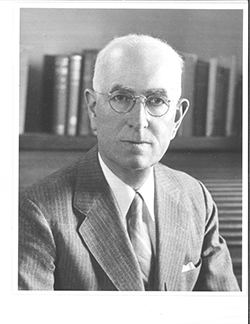 Herbert Ware Reherd (1913–1939): Herbert W. Reherd was Westminster’s first residential president. During his 25-year
service at Westminster, he oversaw the construction of Cushman Cottage, which acted
as the president’s house. His presidency also saw other campus improvements such as
the F. R. Payne Gymnasium and Foster Hall, which are still used today. After his term
as president, Reherd remained on campus acting as a fundraiser, financial advisor,
and consultant as honorary chairman of the university’s Board of Trustees.
Herbert Ware Reherd (1913–1939): Herbert W. Reherd was Westminster’s first residential president. During his 25-year
service at Westminster, he oversaw the construction of Cushman Cottage, which acted
as the president’s house. His presidency also saw other campus improvements such as
the F. R. Payne Gymnasium and Foster Hall, which are still used today. After his term
as president, Reherd remained on campus acting as a fundraiser, financial advisor,
and consultant as honorary chairman of the university’s Board of Trustees.
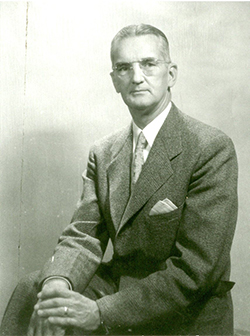 Dr. Robert Denom Steele (1939–1952): Robert Denom Steele previously worked as the university’s vice president, spearheading
multiple projects before his appointment as president in 1939. Steele focused primarily
on academics at Westminster, transitioning the university to a four-year institution
to match with current educational beliefs. He also increased course offerings to include
physics, mechanical drawing, accounting, and other pre-professional courses to prepare
students for work along with their education.
Dr. Robert Denom Steele (1939–1952): Robert Denom Steele previously worked as the university’s vice president, spearheading
multiple projects before his appointment as president in 1939. Steele focused primarily
on academics at Westminster, transitioning the university to a four-year institution
to match with current educational beliefs. He also increased course offerings to include
physics, mechanical drawing, accounting, and other pre-professional courses to prepare
students for work along with their education.
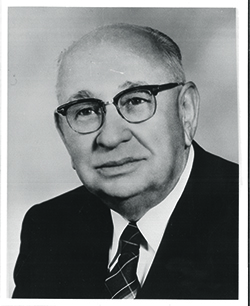 Burton C. J. Wheatlake (1952–1953): Burton Wheatlake spent much of his early life on Westminster’s campus. His father
served on the Board of Trustees from 1927 until his death in 1964. Wheatlake was the
interim president of Westminster University between 1952 and 1953, when he primarily
continued the initiatives of previous president, Robert Denom Steele, until his successor
was announced.
Burton C. J. Wheatlake (1952–1953): Burton Wheatlake spent much of his early life on Westminster’s campus. His father
served on the Board of Trustees from 1927 until his death in 1964. Wheatlake was the
interim president of Westminster University between 1952 and 1953, when he primarily
continued the initiatives of previous president, Robert Denom Steele, until his successor
was announced.
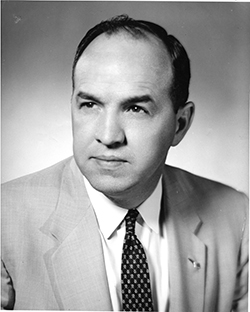 J. Richard Palmer (1953–1956): J. Richard Palmer was the university’s first president who was not a Presbyterian
pastor, instead acting as the pastor of the Emmanuel Methodist Church before his appointment.
During his presidency, Palmer launched a funding campaign for campus renovations,
faculty salaries, and endowment. However, even with his aspirations, many of these
goals were never reached. At the end of the 1954 athletic season, Palmer announced
that Westminster would be expanding its athletic program, offering grant aid programs
for prospective athletes.
J. Richard Palmer (1953–1956): J. Richard Palmer was the university’s first president who was not a Presbyterian
pastor, instead acting as the pastor of the Emmanuel Methodist Church before his appointment.
During his presidency, Palmer launched a funding campaign for campus renovations,
faculty salaries, and endowment. However, even with his aspirations, many of these
goals were never reached. At the end of the 1954 athletic season, Palmer announced
that Westminster would be expanding its athletic program, offering grant aid programs
for prospective athletes.
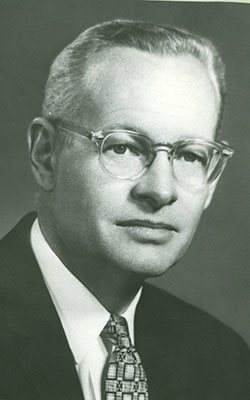 Dr. Frank E. Duddy, Jr. (1956–1963): Dr. Frank E. Duddy was Westminster University’s first non-ministerial president.
During his term, he made key additions to campus and increased academic standards
for incoming students by requiring a C average for admission. Duddy is most known
for his addition of the two oldest residential halls on campus: Carleson Hall and
Hogle Hall. With the addition of these residential halls, Westminster could house
800 full-time students.
Dr. Frank E. Duddy, Jr. (1956–1963): Dr. Frank E. Duddy was Westminster University’s first non-ministerial president.
During his term, he made key additions to campus and increased academic standards
for incoming students by requiring a C average for admission. Duddy is most known
for his addition of the two oldest residential halls on campus: Carleson Hall and
Hogle Hall. With the addition of these residential halls, Westminster could house
800 full-time students.
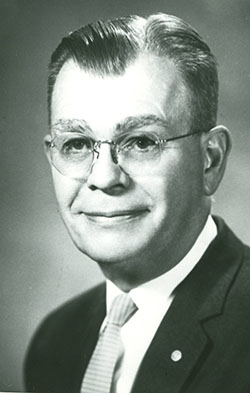 W. Fred Arbogast (1963–1968): W. Fred Arbogast was a Westminster alumnus who had experience with local education,
previously serving as principal at East High School and Highland High School. While
serving Westminster University, Arbogast was determined to increase the number of
enrolled students through aggressive recruiting, varied course options, and flexible
scheduling, including a master's program in teaching. One of his master plans included
the construction of Bamberger Hall in 1967, the creation of a student union, renovations
to multiple facilities, and the first free-standing library on campus—Nightingale
Memorial Library—which opened in 1964.
W. Fred Arbogast (1963–1968): W. Fred Arbogast was a Westminster alumnus who had experience with local education,
previously serving as principal at East High School and Highland High School. While
serving Westminster University, Arbogast was determined to increase the number of
enrolled students through aggressive recruiting, varied course options, and flexible
scheduling, including a master's program in teaching. One of his master plans included
the construction of Bamberger Hall in 1967, the creation of a student union, renovations
to multiple facilities, and the first free-standing library on campus—Nightingale
Memorial Library—which opened in 1964.
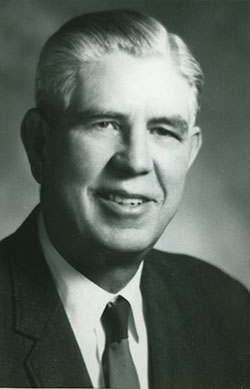 Manford A. Shaw (1968–1976): Manford A. Shaw was a Westminster alumnus and a previous Board of Trustees member.
Shaw was a well-known figure in the Westminster community and a popular presidential
choice. He made advancements in nontraditional course offerings, severed ties with
the Presbyterian Church, and oversaw the completion of building plans laid out by
Arbogast. Shaw instituted positions for two students with speaking and voting rights
on the Board of Trustees, making Westminster the first institution in the Intermountain
region to do so. The student union center was named in honor of Manford A. Shaw.
Manford A. Shaw (1968–1976): Manford A. Shaw was a Westminster alumnus and a previous Board of Trustees member.
Shaw was a well-known figure in the Westminster community and a popular presidential
choice. He made advancements in nontraditional course offerings, severed ties with
the Presbyterian Church, and oversaw the completion of building plans laid out by
Arbogast. Shaw instituted positions for two students with speaking and voting rights
on the Board of Trustees, making Westminster the first institution in the Intermountain
region to do so. The student union center was named in honor of Manford A. Shaw.
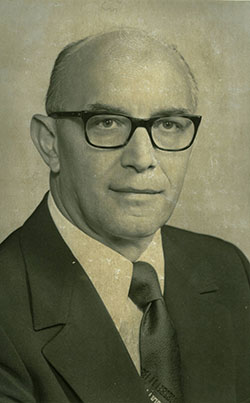 Dr. Helmut Hofmann (1976–1979): Dr. Helmut Hofmann previously served as the academic vice president for both Weber
State University and Westminster. During his presidency, he continued previous efforts
in curriculum expansion and enrollment growth, reaching highs never before seen. Hofmann
oversaw the construction of Nunemaker Place during his term. Previously used as a
clergy space for those of all denominations, Nunemaker Place now houses Westminster’s
Honor’s College.
Dr. Helmut Hofmann (1976–1979): Dr. Helmut Hofmann previously served as the academic vice president for both Weber
State University and Westminster. During his presidency, he continued previous efforts
in curriculum expansion and enrollment growth, reaching highs never before seen. Hofmann
oversaw the construction of Nunemaker Place during his term. Previously used as a
clergy space for those of all denominations, Nunemaker Place now houses Westminster’s
Honor’s College.
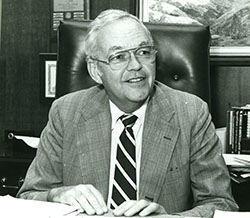 C. David Cornell (1979–1982): C. David Cornell served as vice president at various institutions nationwide before
being appointed president of Westminster. During his presidency, Cornell brought the
university back to its liberal arts focus and implemented a 10-year plan designed
in collaboration with students, administrators, and staff. The course curriculum was
updated with the goal of increasing student enrollment. This included the addition
of May Term, which was popular among local students.
C. David Cornell (1979–1982): C. David Cornell served as vice president at various institutions nationwide before
being appointed president of Westminster. During his presidency, Cornell brought the
university back to its liberal arts focus and implemented a 10-year plan designed
in collaboration with students, administrators, and staff. The course curriculum was
updated with the goal of increasing student enrollment. This included the addition
of May Term, which was popular among local students.
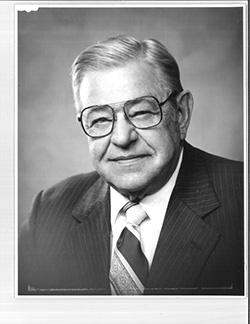 James E. Petersen (1982–1985): James E. “Pete” Petersen served as president over two separate terms, the first in
1979 for 8 months, before returning in 1982 and serving the campus for three years.
He helped Westminster avoid bankruptcy through a comprehensive cost-cutting program
that reduced campus expenses by more than half a million dollars. Petersen’s efforts
found help through donations primarily from Berenice Jewett Bradshaw and the Gore
family.
James E. Petersen (1982–1985): James E. “Pete” Petersen served as president over two separate terms, the first in
1979 for 8 months, before returning in 1982 and serving the campus for three years.
He helped Westminster avoid bankruptcy through a comprehensive cost-cutting program
that reduced campus expenses by more than half a million dollars. Petersen’s efforts
found help through donations primarily from Berenice Jewett Bradshaw and the Gore
family.
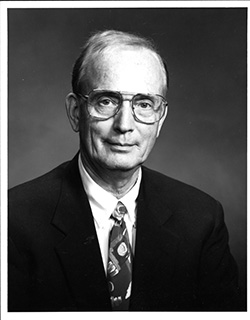 Dr. Charles H. Dick (1985–1995): Dr. Charles H. Dick was a well-known educator, administrator, and fundraiser. He
previously served as the president for Centenary College in New Jersey and vice president
at Cornell University Medical Center. Dick called for innovative, quality education
during his term as president, which included implementing a balance between liberal
arts and professional skills. During his term, the Bill and Vieve Gore School of Business
was built and plans for Giovale Library were put in place, greatly expanding and improving
campus facilities.
Dr. Charles H. Dick (1985–1995): Dr. Charles H. Dick was a well-known educator, administrator, and fundraiser. He
previously served as the president for Centenary College in New Jersey and vice president
at Cornell University Medical Center. Dick called for innovative, quality education
during his term as president, which included implementing a balance between liberal
arts and professional skills. During his term, the Bill and Vieve Gore School of Business
was built and plans for Giovale Library were put in place, greatly expanding and improving
campus facilities.
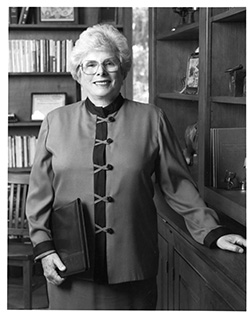 Dr. Peggy A. Stock (1995–2002): Dr. Peggy A. Stock was Westminster University’s first female president. Dr. Stock
had aspirations for Westminster University to be the first and best choice for prospective
students. Only six days after being appointed, she confronted the board with current
campus issues; and after 90 days, she and the board changed the bylaws and articles
of incorporation, setting off an era focused on “time, treasure, and talent.” One
of her largest contributions to campus was the construction of the residential village,
which consisted of three new apartment-style residence halls.
Dr. Peggy A. Stock (1995–2002): Dr. Peggy A. Stock was Westminster University’s first female president. Dr. Stock
had aspirations for Westminster University to be the first and best choice for prospective
students. Only six days after being appointed, she confronted the board with current
campus issues; and after 90 days, she and the board changed the bylaws and articles
of incorporation, setting off an era focused on “time, treasure, and talent.” One
of her largest contributions to campus was the construction of the residential village,
which consisted of three new apartment-style residence halls.
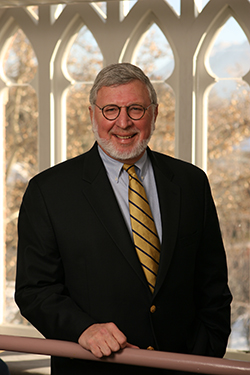
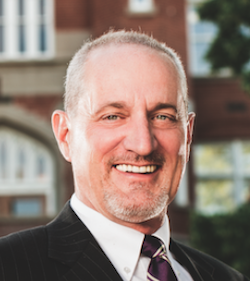 Dr. Brian Levin-Stankevich (2012–2015): During his term, Dr. Brian Levin-Stankevich was committed to providing opportunities
for all students. He had a distinct passion for the value and integrity of education
grounded in the liberal arts and sciences. While in administrative roles, Levin-Stankevich
maintained a connection to scholarship and his students through presentations and
classroom teaching.
Dr. Brian Levin-Stankevich (2012–2015): During his term, Dr. Brian Levin-Stankevich was committed to providing opportunities
for all students. He had a distinct passion for the value and integrity of education
grounded in the liberal arts and sciences. While in administrative roles, Levin-Stankevich
maintained a connection to scholarship and his students through presentations and
classroom teaching.
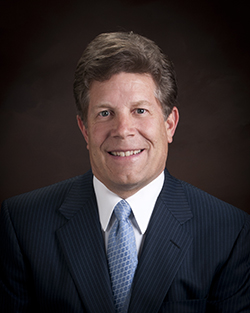 Stephen R. Morgan (2015–2018): Stephen R. Morgan dedicated more than three decades to Westminster in a variety of
administrative roles, including vice president for institutional advancement, executive
vice president, and treasurer. Morgan played a key role in advising six previous Westminster
presidents before serving his own three-year term. He also led the university’s master
plan and the 2004–2014 and 2014–2019 strategic plans. During his three decades on
campus, Morgan directed 17 campus construction and renovation projects, including
the Giovale Library, the Bill and Vieve Gore School of Business, and the Dolores Doré
Eccles Health, Wellness, and Athletic Center.
Stephen R. Morgan (2015–2018): Stephen R. Morgan dedicated more than three decades to Westminster in a variety of
administrative roles, including vice president for institutional advancement, executive
vice president, and treasurer. Morgan played a key role in advising six previous Westminster
presidents before serving his own three-year term. He also led the university’s master
plan and the 2004–2014 and 2014–2019 strategic plans. During his three decades on
campus, Morgan directed 17 campus construction and renovation projects, including
the Giovale Library, the Bill and Vieve Gore School of Business, and the Dolores Doré
Eccles Health, Wellness, and Athletic Center.
 Dr. Bethami (Beth) Dobkin (2018–Current): Dr. Beth Dobkin spent more than 30 years in teaching and administrative roles in
higher education before being appointed as Westminster’s 19th president. Under her
presidency, Westminster has achieved national recognition for the successful career
outcomes of its students, its work in sustainability, support for first-generation
students, and leadership in promoting diversity, equity, and inclusion. Dobkin oversaw
the opening of the L.S. Skaggs Integrated Wellness Center and the expansion of the
Jewett Center for the Performing Arts through the addition of Florence J. Gillmor
Hall. In 2023, Dobkin led Westminster through the transition from college to university,
reflecting Westminster’s full range of academic programs and signaling the quality
of the institution to students.
Dr. Bethami (Beth) Dobkin (2018–Current): Dr. Beth Dobkin spent more than 30 years in teaching and administrative roles in
higher education before being appointed as Westminster’s 19th president. Under her
presidency, Westminster has achieved national recognition for the successful career
outcomes of its students, its work in sustainability, support for first-generation
students, and leadership in promoting diversity, equity, and inclusion. Dobkin oversaw
the opening of the L.S. Skaggs Integrated Wellness Center and the expansion of the
Jewett Center for the Performing Arts through the addition of Florence J. Gillmor
Hall. In 2023, Dobkin led Westminster through the transition from college to university,
reflecting Westminster’s full range of academic programs and signaling the quality
of the institution to students.
About the Westminster Review
The Westminster Review is Westminster University’s bi-annual alumni magazine that is distributed to alumni and community members. Each issue aims to keep alumni updated on campus current events and highlights the accomplishments of current students, professors, and Westminster alum.
GET THE REVIEW IN PRINT Share Your Story Idea READ MORE WESTMINSTER STORIES